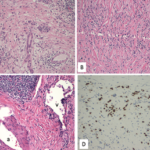When the researchers evaluated the ability of serum IL-6 to predict relapse, they found—unlike serum IgG4, which can be used to predict IgG4-RD relapse—no significant differences in the median observation periods and IL-6 levels between relapse and non-relapse groups.
Lara C. Pullen, PhD, is a medical writer based in the Chicago area.
ad goes here:advert-1
ADVERTISEMENT
SCROLL TO CONTINUE
Reference
- Tsukuda S, Ikeura T, Ito T, et al. Clinical implications of elevated serum interleukin-6 in IgG4-related disease. PLoS One. 2020 Jan 17;15(1):e0227479. eCollection 2020.


